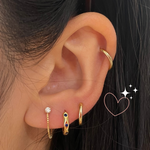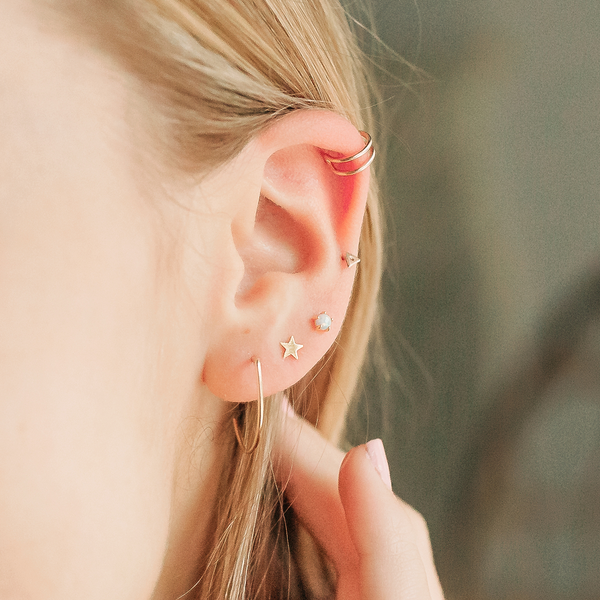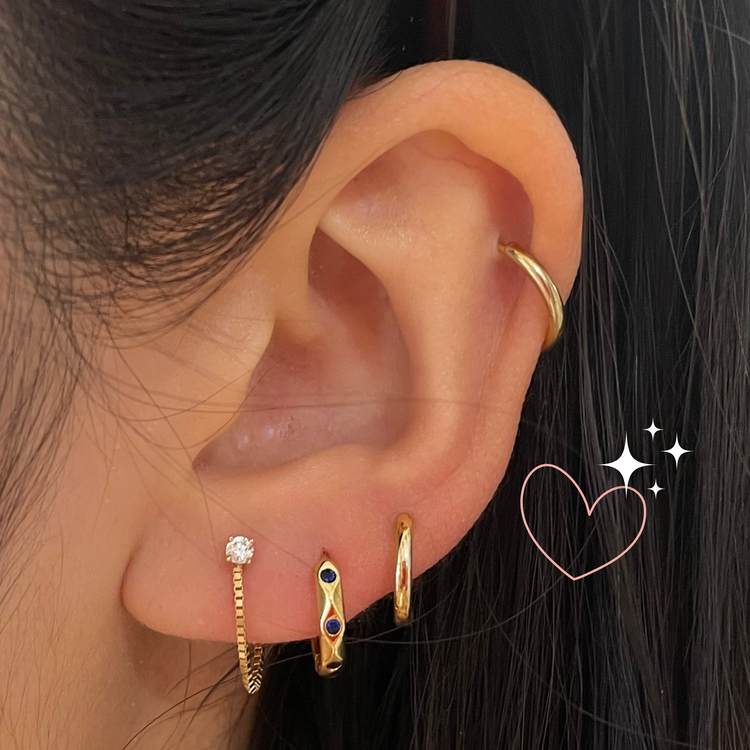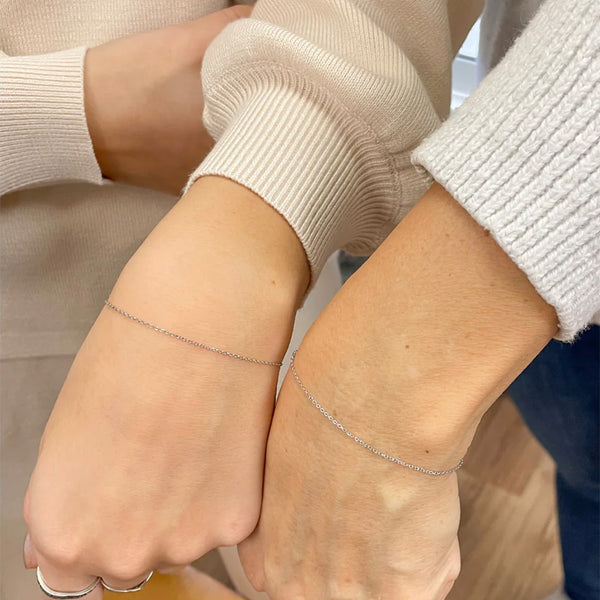Guide to Birth Month Flowers (With Meanings!)
You’ve heard of birthstones, but did you know that you have a birth flower too?
Just like birthstones, each month has a designated flower that represents it, with its own symbolism and meaning. Birth month flowers are usually given as gifts to celebrate a person's birthday, but they also make beautiful presents for other special occasions like Mother’s Day too.
Here at Adorn512, we love the concept of birth month flowers so much that we created our Birth Month Flower Necklace. Skip the bottom of the post to learn more about this unique and delicate piece, but first - let’s cover all the birth month flowers and their meanings!
January: carnation and snowdrop
Carnations are popular for their ruffled petals and come in a variety of colors, including pink, red, white, and yellow. Different colors of carnations can also have specific meanings, such as pink carnations symbolizing a mother's love, and red carnations representing deep love and affection.
Snowdrops are delicate white flowers that typically bloom in late winter or early spring. They’re often associated with purity, hope, and new beginnings, and in some cultures, are believed to bring good luck.
Both carnations and snowdrops are beautiful flowers that can make lovely gifts for those born in January or for anyone who appreciates their beauty and symbolism.
February: violet and primrose
Violets are delicate, fragrant flowers that come in a variety of colors - they’re typically purple but also come in blue, white, and yellow. They’re often associated with humility, faithfulness, and modesty.
Primroses are cheerful, colorful flowers that typically bloom in early spring. They’re associated with young love, happiness, and grace. In some cultures, primroses are also believed to have healing properties and have been used in herbal remedies. They are also edible!
March: daffodil and jonquil
Daffodils are cheerful yellow flowers with a trumpet-shaped center surrounded by six petals. They’re closely associated with spring as they’re one of the first flowers to bloom during this season, and they also represent new beginnings.
Jonquils are members of the daffodil family and have a similar appearance. They have a strong, sweet fragrance that is often used in perfumes and aromatherapy.

April: daisies and sweet peas
Daisies are cheerful flowers that come in many colors, including pink, yellow, and red, but are most often white. They’re associated with innocence, purity, and new beginnings.
Sweet peas are fragrant flowers that come in a wide range of colors and are often used in floral arrangements. They’re associated with gratitude and appreciation, and make lovely ‘thank you’ flowers.
May: lilies of the valley and hawthorn
Lilies of the valley are delicate, fragrant flowers which bloom in May and symbolize sweetness, humility, and purity. These bell-shaped, white flowers are often used in bridal bouquets!
Hawthorn, also known as Mayflower, is a small tree or shrub that produces clusters of white or pink flowers in the spring. Hawthorn symbolizes hope, happiness, and love. In folklore, it was believed that bringing hawthorn flowers into the house would bring good luck and protect against evil spirits.

June: rose and honeysuckle
Roses are one of the most popular and recognizable flowers in the world. They’re associated with love and romance, making them a popular choice for wedding bouquets and romantic gestures. The different colors of roses have different meanings, for example, red roses symbolize passion and love, while yellow roses symbolize friendship and joy.
Honeysuckles are sweetly scented flowers that are known for their attractive appearance and fragrance. They are typically white, pink, or yellow and are often used in perfumes and essential oils. Honeysuckles symbolize everlasting love and devotion.
July: larkspurs and water lilies
Larkspurs are tall, showy flowers that tend to come blue, pink, and white. They’re often used in floral arrangements and are a symbol of love, lightness, and levity. In folklore, larkspurs were believed to have magical properties that could ward off evil spirits.
Water lilies are aquatic plants with large, vibrant blooms that float on the surface of still waters. They’re known for their beauty and tranquility, and are often associated with purity, enlightenment, and rebirth.

August: gladiolus and poppies
The gladiolus is a tall and elegant flower that symbolizes strength, integrity, and moral values. In ancient times, gladiolus flowers were associated with gladiators, and they were named after the Latin word "gladius," meaning sword.
Poppies are bright and colorful flowers that are used in remembrance of fallen soldiers because they grew on the battlefields after World War One ended. They’re also associated with imagination and creativity, making them a popular choice for artists and writers.
September: aster and morning glory
Asters have a star-like appearance and have intrigued many artists over the years such as Claude Monet and Vincent van Gogh. In Greek mythology, asters were said to have grown from the tears of the goddess Astraea, who wept at the sight of the world's injustices.
Morning glories are delicate, trumpet-shaped flowers that come in shades of blue, pink, and purple. They’re known for their vibrant color and the way they open in the morning and close at night. Morning glories symbolize love and affection, and in many cultures, they’re also associated with resurrection and rebirth.
October: marigolds and cosmos
Marigolds are bright, sunny flowers that are known for their pungent scent and symbolize passion, creativity, and warmth. Their orange color means they fit in perfectly will fall decorations!
Cosmos are delicate, daisy-like flowers that come in shades of pink, white, and purple. They’re known for their simplicity and beauty and are often used in cottage gardens and wildflower meadows. Cosmos symbolize harmony, order, and balance.

November: chrysanthemums
Chrysanthemums are known for their long-lasting blooms and symbolize loyalty, friendship, and love. They’re also the official flower for celebrating a 13th wedding anniversary.
December: holly
Holly has become a Christmas staple across the globe with its prickly leaves and bright berries. In ancient times, holly was believed to ward off evil spirits, while today holly is a symbol of Christmas, often used in wreaths, garlands, and other holiday decorations.
Adorn512’s Birth Month Flower Necklace
Now that we’ve covered all of the birth month flowers and their meanings, we’re so excited to introduce you to our own take on this gorgeous sentiment.
Delicate with a touch of whimsy, our hand-stamped pendant necklace features a flower design that represents your (or your loved one’s!) birth month. We love the subtle femininity it offers on its own, but because the oval pendant is suspended from a dainty gold chain that falls just below the collarbone, it's perfect for layering too.

What are you pairing yours with?

















Leave a comment